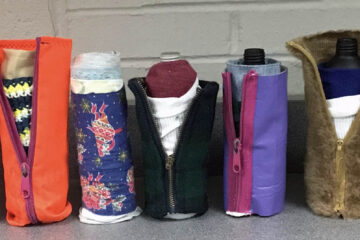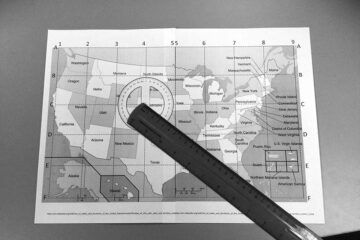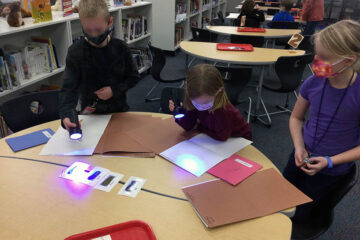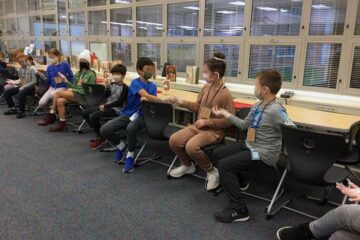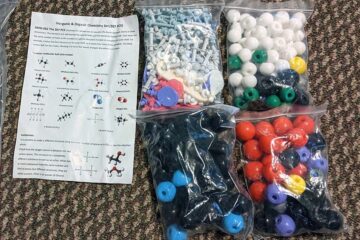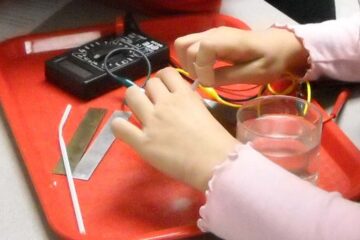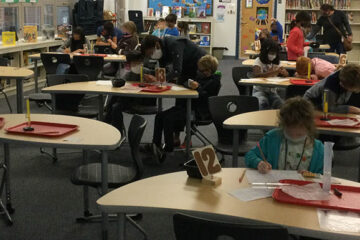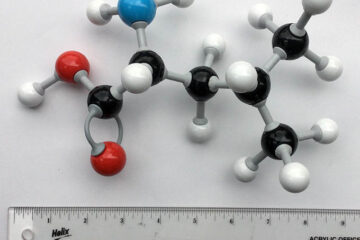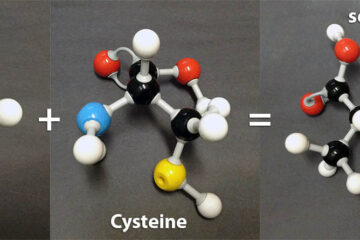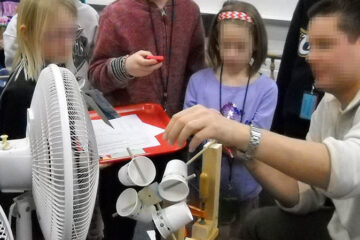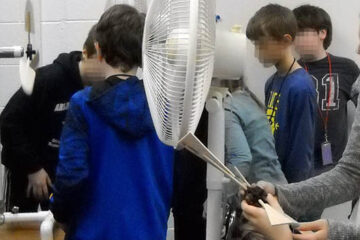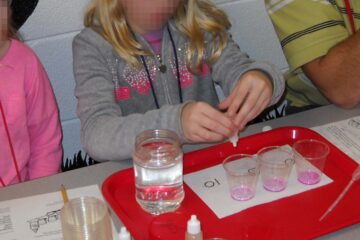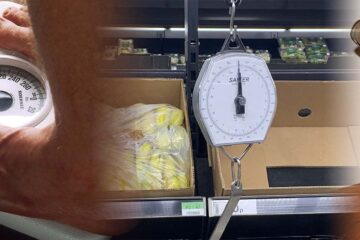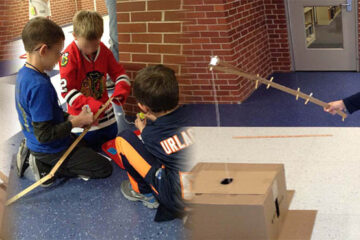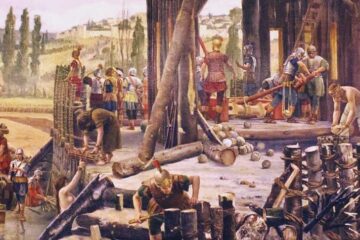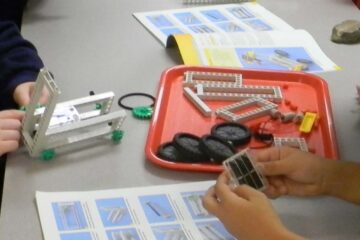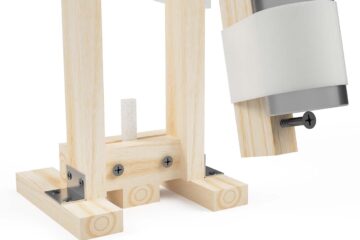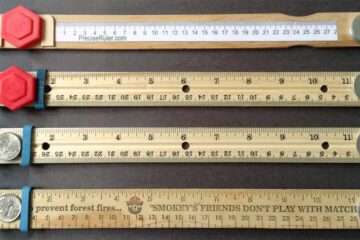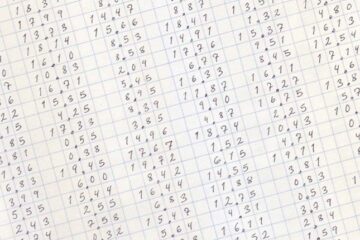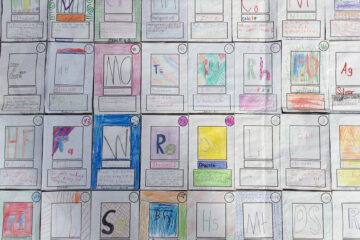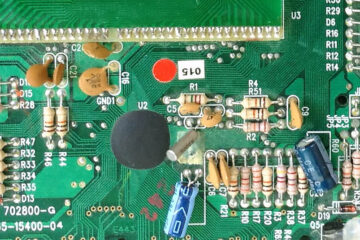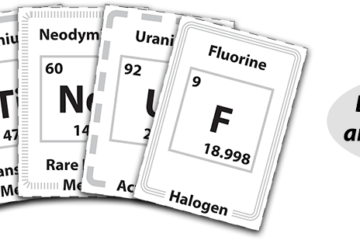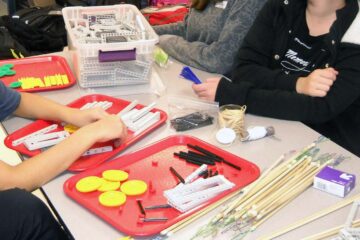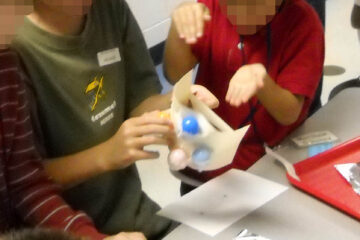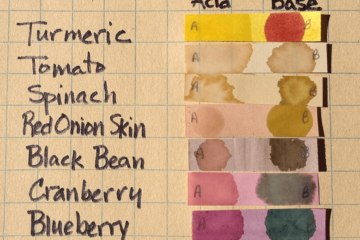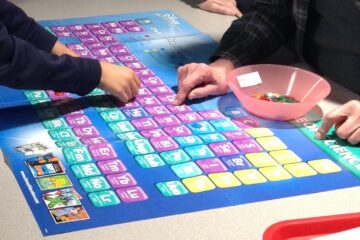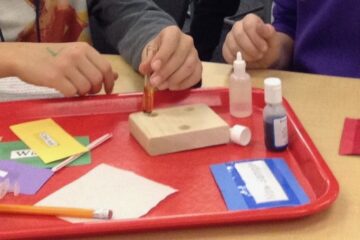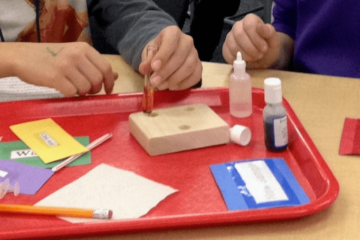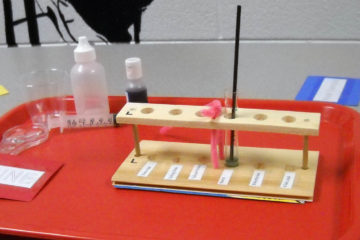Prefer to browse a list? Choose one of these: All Posts – Modules – Toolbox – Logistics
Keep the Heat
In this module, participants explore how well various fabrics help a can of hot water retain heat, learning about thermal transport...
Map and Compass Scavenger Hunt
This economical and easy-to-prepare activity combines learning to use a map and compass in a scavenger hunt format. It can be a standalone indoor activity, or an introduction to the fundamentals of orienteering...
Whodunit — Cracking the Case with Science
Challenge your students’ powers of deduction to determine which of four suspects committed several different burglaries. This module is low cost, easy to run, and versatile for a range of ages and durations...
Epidemic — What Goes Around Comes Around
This activity helps students understand how human-to-human contact can spread pathogens, and how vaccines limit that spread...
The Bell Game — Fun in 15 Minutes
What can you do when your planned activity ends 15 minutes before your meeting ends? A bell quiz of relevant questions is a great option to plug that hole...
Off-Brand Molecule Model Kits – How Do They Compare?
In our post about molecular model kits for use with younger students, we'd mentioned seeing various "off-brand" versions of Molymod- and Minit-style model kits available for sale online. We've bought them to find out how they compare with "The Real Deal." Are they mediocre quality knock-offs or a boon to small budgets?...
Sample Management — no more missing samples
This simple procedure can help make messy, misplaced, mixed-up, and missing samples a thing of the past...
Archimedes’ Principle — Eureka!
In this module, students will learn about density and its measurement via water displacement. They will employ this knowledge to determine the identities of mystery metals, sleuth out whether the jewelry is real, and more!...
The Best Molecular Model Kits For Use With Younger Students
3D graphics are great, but nothing provides the same experience as handling and manipulating a physical model. Children truly enjoy assembling these models, so it is worth the investment of time and money to purchase and/or borrow them. Here we introduce a range of different model types, along with their strengths and weaknesses for use with younger students...
DNA Discovery
Most children have heard about DNA, whether in terms of police detective work, discovering one’s ancestry, fighting cancer and other diseases, or most recently in the new highly effective mRNA vaccines. This module provides even young students the information to better understand what DNA is, and how it is essential to all life...
Amino Acids and Proteins — The Building Blocks of Life
This module introduces students to proteins, crucial to all life and life processes, and the amino acids from which they are made...
Mechanical Wind Turbines for Lifting Weights — Two-Session Format
This post details how to run the two-session version of the mechanics-focused variant of the Wind Turbine module. For the one-session version , as well as the electrical variants, see the Overview Post...
Mechanical Wind Turbines for Lifting Weights — One-Session Format
This post details how to run the one-session version of the mechanics-focused variant of the Wind Turbine module. For the two-session version , as well as the electrical variants, see the Overview Post...
Wind Turbines to Generate Electricity — One-Session Format
This post details how to run the one-session version of the electricity-focused variant of the Wind Turbine module. For the other other versions , as well as the mechanical variants, see the Overview Post...
Wind Turbines to Generate Electricity — Two-Session Format
This post details how to run the two-session version of the electricity-focused variant of the Wind Turbine module. For the other other versions , as well as the mechanical variants, see the Overview Post...
Wind Turbines to Generate Electricity — Workshop Format
This post details how to run the workshop version of the electricity-focused variant of the Wind Turbine module. For the other other versions , as well as the mechanical variants, see the Overview Post...
Wind Turbines to Generate Electricity — Supplies and Preparation
Wind Turbine Module - Electric Version: Wind turbines that generate electricity require greater monetary investment, but provide for a wider range of experimentation. Students test blades, premade or of their own design, adjusting parameters to maximize electrical output...
Wind Turbines — Engineering the Future — Overview
Alternative energy topics are both popular and relatable with children. This versatile engineering module -- containing both electrical and mechanical variants -- focuses on wind turbine blade development, which provides an excellent platform for teaching concepts of experimental design. Subtle changes in blade configuration often yield dramatic results that excite the youngsters and encourage them to investigate further...
Titration Made Simple
This module introduces the concepts and techniques of titration. Children will employ this knowledge to determine the relative strengths of acidic and basic solutions by titration using very simple equipment and solve a variety of challenge scenarios...
Hooke’s Law — It’s No Stretch!
Many balances familiar to students, such as bathroom or grocery store scales are examples of spring balances. Hooke’s Law defines the relationship between the force applied to a spring or other elastic material to the distance it stretches or compresses. In this module, students will set up and conduct experiments to test the validity of the relationship...
Magnet Challenge — Gotta Catch ’em All
This fast-paced engineering problem solving exercise is a favorite with elementary school students. It's also inexpensive, easy to teach, quantitative, can accommodate a lot of kids, and is easy to adjust the difficulty of...
Storm the Castle
“Storm the Castle” is an exercise in engineering problem solving that’s loads of fun for children of all ages. Students take on the role of "besieging armies", designing siege engines capable of launching "boulders" (ping pong balls) into the defending castle, earning points depending on where the balls land. They also design a device to retrieve containers of boulders from the "quarry"...
Bridges and Towers
This two-part activity introduces children to basic bridge types and design considerations. Students then put this knowledge into practice, designing and building strong-but-light bridges and the tallest towers!...
Building Sets for Science Activities with Younger Kids
Building activities are perennial favorites with students of all ages. Although there's no one building set that's best for all activities, here are two options that we've found to be particularly good for our modules...
Paper Chromatography — The Colors Within
Paper chromatography is a technique for separating out components in a mixture, such as for testing the purity of compounds. In this module, Kidizen scientists will study the composition and separation behaviors of a variety marker types and colors. They will then employ this knowledge and their chromatography skills to identify the various mystery markers from their inks alone!...
Materials Science — The Right Stuff
On the first day of this two-part module, students will determine the physical properties of assorted building materials using a range of hands-on tests. The following day, they will use that information to decide the best materials for constructing a given item or structure, pitching their designs to prospective "customers"...
Inexpensive Homemade Materials Testing Jigs
Kid- and budget-friendly testing jigs for measuring various aspects of a material's strength & more, as featured in the upcoming Materials Science module. These designs are inexpensive, durable, and require minimal tools and skills to construct...
Lever Balances — The Classic Way to Measure Weight
Many children today have only experienced digital weighing devices, black boxes that with the touch of a button magically display the weight of an item. This low cost, easy to prepare exercise lets children experience how people measured mass for thousands of years...
Imperfect Data, and Why That’s A Good Thing
Your students' data is imperfect ...the activity is ruined? Not at all! It's actually a fantastic opportunity to teach some critical concepts about data collection and analysis. Those imperfections can actually reveal a lot about the system being studied, the measurement tools involved, and the experimenters themselves!...
The Periodic Table – It’s Elemental!
The United Nations Educational, Scientific and Cultural Organization (UNESCO) designated 2019 as the International Year of the Periodic Table (IYPT) to mark the 150th anniversary of the Mendeleev periodic table. This iconic resource, a vital tool for all who learn and work in science, provides ample opportunities to engage even the youngest students. You do not have to wait for the next anniversary to include a periodic table session in your science enrichment program...
Electronic Components: Inside the Black Box
To most people the electronic devices they encounter daily are simply black boxes. What's underneath the screen of a tablet, inside the TV, or behind the touch pad of the microwave? This module introduces children to the basic components that make up every electronic circuit...
Simple Games to Use with Children
Games most young children already know how to play are popular station activities. A printer and cardstock are all you need to create your own science-based versions. Alternatively, inexpensive blank playing cards are readily available online. Attaching printed text and images with clear packing tape produces sturdy, long-wearing cards. An...
A Better Way to Manage Supplies for Building Activities
Want a better way to manage supplies in your building activities, that leads to more thoughtful designs and less waste? Read on!...
The Panamax Challenge
This module is an alternative version of The Great Boat Float Challenge, which may be more satisfying for older students -- third grade and up -- than simply building a boat to hold as much weight as possible. Students consider the real-world problem that marine engineers and naval architects face when designing ships to pass through the Panama Canal. "Panamax" refers to the maximum allowable dimensions for those ships. This is a good activity for teams of two students...
The Great Boat Float Challenge
This activity introduces the concept of displacement and buoyancy as it relates to boats and ships, and then lets students put this knowledge into practice by designing and building model boats to hold as much weight as possible without sinking or capsizing...
Weights and Weighing
The need to weigh or add weight to something is a frequent feature in science activities. Fortunately, not only are there many different options – and what's "best" varies by activity – but plenty of them are inexpensive or free! Here we discuss what we've found to be the most useful and kid-friendly choices...
Homemade pH Paper
How can you tell how acidic or basic something is? Touching or tasting it could be dangerous or unpleasant. In this activity, students use indicator papers made from familiar fruits & vegetables to see which are the best at measuring pH...
Notes About Volunteers
Creating a child- and volunteer-safe environment Anyone currently employed by a school district or other organization that serves youth is probably required by state law to receive ongoing training in youth safety. The purpose of this training is two-fold; it protects both the children and the adults working with them...
The Carbon Cycle
In this module, each student represents a carbon atom. The purpose of the activity is to show how carbon atoms move through the environment over time, known as the "carbon cycle"...
Guide to Planning and Running a Successful Science Activity with Kids
What makes for a successful after-school science activity? How to maintain engagement of young kids? How to keep things running smoothly? This post details an experience-tested framework and advice for planning and running a successful science activity for kids...
Mystery Powders
A mysterious white powder! What could it be? Our young investigators will sleuth out the identities of the mystery mixtures by first building an "answer key" for how the individual "known" powders react to a variety of tests. Then they'll use this key to figure out what pair of powders are in each unknown mixture by subjecting them to these same tests...
Essential Supplies
Each activity has its own supply needs, of course, but in this post we describe the "essentials." Versatile, reusable items that have proven useful in almost all club module run. Plus, they can be obtained for cheap or even free!...
No post found
